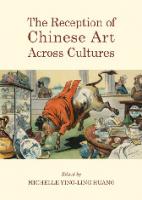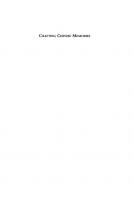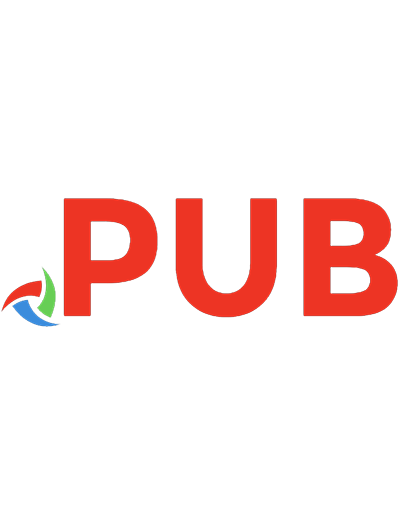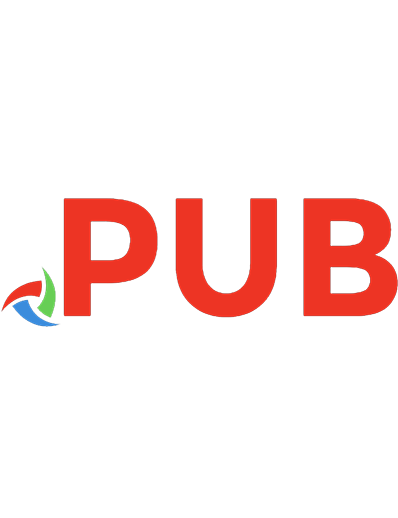Balance: The Art of Chinese Business 9781844644001, 9781844642908
China has its own history and success in business with a system of management which is very different to Western models.
171 104 24MB
English Pages 145 Year 2014
Polecaj historie
Citation preview
Paths International Cases in Modern Chinese Business
BALANCE THE ART OF CHINESE BUSINESS Zeng Mingbin
Balance: The Art of Chinese Business
Zeng Mingbin
SPII ~~llll(t4, i*lt•.t--~
+
Paths International Ltd
Preface
The management master Peter Drucker once said that in the 21" century, China would possibly share its secret of management with the rest of the world. After experiencing the shock brought by global financial turmoil , we have to settle down to rethink profoundly that we have been studying the western management and the western classic masterpieces every day, but western enterprises themselves just couldn' t withstand a single blow when the financial crisis wave swept over. With many years ' working experiences in foreign enterprises and in corporate management, consultation and training, I have found that in our daily work, what we mainly explore are some management modes and structural models introduced from western countries. However, some advanced management methods couldn ' t adapt to the local environment of Chinese enterprises , for example, the IS09000 system, which wins great favor in foreign countries , was turned out to be a boring "Obstacle 9000" when it came to Chinese enterprises. Whereas, our domestic management circle still followed the current trends : when Peter Senge talked about "the Fifth Discipline" , we began to discuss " the cultivating organization" heartedly; when Collins proposed the ideas of "evergreen foundation" and "from excellence to brilliance" , we rolled out the principle of leadership ; when Hermann Simon raised the concept of hidden champions , we began to spare no efforts to search for Chinese hidden champions everywhere; when W. Chan Kim and Renee Mauborgne came up with "the blue ocean strategy" , we also followed suit closely for fear of falling behind and being laughed at. These management scientists never thought whether the management modes and techniques were suitable for local Chinese enterprises or not. China, a country of the largest population in the world, has a civilization history of five thousand years. It once had remarkable experiences in both people -oriented management and organizational management. For a long time , Chinese enterprises have played a dominant role in the market due to their rapid market response, resilience and specialization. You can see made -in -China products everywhere and anywhere in the world. In consequence , we have to ponder over: it seems that Chinese people have explored some organizational patterns , management methods and ideas that are quite different from those of western countries, but what characteristics do they hold on earth?
Along with these questions, we went back to the classroom and studied all MBA curriculums systematically with congenial classmates together. I still remember that what the professors often taught in class was still the management knowledge borrowed from western countries ; even all books were wholly imported from western countries. In our mind, we were filled with knowledge of regulations, systems, processes, models, tools, etc. In terms of case study practice , these models and tools were completely copied to Chinese enterprises. However, in local Chinese enterprises, what employees talk about frequently are not the above -mentioned models and tools , but the phenomena characterized by Chinese local features such as the circle culture, kinship group, fractions and so on, which are centered on the traditional codes of conduct, face, work and life on the basis of interpersonal relationships. After undergoing the financial crisis , Chinese enterprises still can retain their strong resilience and show their self - adjustment capabilities in the turbulent business environment-this has drawn substantial attention worldwide. It happens that there is a similar case. The management master Mintzberg bitterly rebuked in his book named Managers Not MB& that today' s management education in America taught unsuitable people by wrong methods , resulting in the failure in the education process and management practices , and depraved enterprises, organizations and social systems. He even thought that all of them fmally made numerous irresponsible companies come into being and thereof aroused the current financial tsunami. I have studied management for dozens of years , but I still can not find out reasonable interpretation to this phenomenon. Then I turned to sociology and conducted post - doctoral research with Professor Der Luo, a sociology doctor of Tsinghua University. Professor Der Luo is not merely a top figure in Chinese sociology circle; he is also specialized in management science. In the process of sorting out literatures with Professor Der Luo , I discovered that in early 1949, the sociology master Fei Xiaotong had pointed out in his Rural China that good social governance valued the importance of laws and human feelings equally and the combination of laws and human relationships, which was similar with the core ideology of playing it in - between emphasized by the Doctrine of Mean. Good corporate management is rightly like this. Good management education should not only pay attention to the preaching of theories and techniques , but also value the teaching of wisdom and art, and thus get a good balance between the two. In other wonls, it means keeping a dynamic balance in variable systems so as to ensure the compatibility of Yin and Yang and the coexistence of two extremes, reaching the final goal of all living creatures growing together without doing harm to one another, roads running parallel without interfering with each other. This is the so -called multi -existence, mutual generation and restriction, harmonious relationship and continuous reproduction. An excellent corporate leader must be equipped with profound knowledge of how to make an organic bond between the western management teachings and Chinese traditional culture and help local Chinese man-
agement models take shape. Academically speaking , the combination of Dao ( ideology, culture , wisdom , art, etc) and Shu (regulation, system, process , model, tool , etc) shows us a way of good corporate governance. Only when leaders effectively find a balance between Dao and Shu can they walk along the road from excellence to brilliance. It is rightly based on this idea that this book comes out. Zeng Mingbin
in Qinghua Park August lOth, 2010
Overall Self - inspection
There are some brief tests which are shown in the questionnaire below and used to evaluate your leadership style in front of your subordinate staffs. A total of eight problem statements are involved in this questionnaire. Please circle the answers that fit well with your state of mind after reading each question. Please do remember, be objective and honest and point out the answers corresponding to your truest feelings instead of the quality that you think you should have or others expect you to have. Your first feeling of answers to the questions comes first.
Questions
1. Generally speaking, you hold the opinion that people are willing to be staffs instead of sharing responsibility and being ambitious. 2. Leadership is an inherent merit and capability. 3. Award (such as pay rise and promotion) and punishment ( such as not giving promotion) are the best ways of motivating the subordinate staffs to work harder. 4. In a work environment, it means that you lose your influence on your subordinate staffs if the latter could exert an impact on you. 5. A good leader would formulate work instructions of possibly complete details for his subordinate staffs instead of merely pointing out the rough working direction. 6. The establishment of personal gual is more important than that of team goal. 7. It is quite enough for a leader to tell his staffs the current necessary working information. 8. In an organization, a leader's power of influence on his subordinate staffs is centralized on the economic level basically.
Definitely Disagree Disagree (2) ( 1)
No Comment
(3)
Agree (4)
Quite Agrne(5 )
Markings :the number nearby each option represents the calculated value of each answer. For example, if you choose "Quite Agree" , you get five scores in corresponding question. And you can calculate the total point by adding all respective scores of the eight questions together. Your total point: What does your mark reveal? You total point is the general indicator used to evaluate your leadership tendency and the philosophy of leadership you hold. Generally speaking, supervisors are quite unclear about the guiding principle that they abide by. This is indeed the significance that this test lies in.
H your score is 30 or above , it means that you
are using a controlling philosophy to lead
your subordinate staffs.
H your score is between 16 and 30, it means that you intend to choose a balanced leadership style.
H your score is 16 or below, it indicates you are characterized by an authorized philosophy. H your leadership style is continuously changing, it can possibly mean that you are shifting
from one philosophy of leadership to another. (Note: this questionnaire is extracted from the hook Networking Smart written by Wayne Baker.) Brief introductions of leadership styles : A. Controlling leadership style: this kind of leadership style emphasizes the central position
of leaders. It is a usual practice that leaders would make decisions independently, including job content, resource allocation and profiles. In addition, leaders not only pose strict requirements on their staffs ; in the meantime, they also pin great hope on them. They require complete obedience and rapid action of staffs. With influence on this control - dominated leadership style, staffs are merely executors and they are not required participating in the corporate affairs actively. Leaders coordinate activities of staffs by way of regulations, processes, supervision and guidance, and take responsibility for giving awards and punishment. B. Balanced leadership style:this kind of leadership style stands neutral between the controlling leadership style and the authorized leadership style. Leaders with this style usually discuss with staffs and convince them in a certain degree , and help them make the final decision. Under the leadership of these leaders, the final decision is usually made by staffs themselves on the basis of their own knowledge and capability and leaders often perform the role of assistance if necessary. C. Authorized leadership style: this kind of leadership style puts subordinate staffs at the core. Leaders scarcely exert their power. They usually transfer the complete decision -
making right to their staffs and promote staffs themselves to set their own goals and take
relevant actions to achieve them. As to this leadership style which considers authorization as the dominant part , leaders only provide infonnation, materials, resources and conditions necessary for staffs ' decision - making and the completion of tasks, offer some consulting service and play a role as the bridge between organizations and exter-
nal envirorunent. They try their best to not participate in decision - making, neither do they actively intervene staff's daily work. They only voice some opinions occasionally. The autonomous work of team members almost plays a decisive role in the completion of tasks.
Contents
Chapter One Yin - Yang and Dynamics-Balance of Leadership Thinking 1 1 I
1. 1
Yin - Yang Thinking of Chinese People
1
1. 2
Management Dilemma and Yin - Yang Dynamic Balance
1. 3
Application and Thinking of Yin - Yang Dynamic Balance Leadership
I
4
I
10
Chapter Two Authority and Intluence-Balance of Leading Power I 19 2. 1 Leader and Leadership I 19 2. 2
Authority and Power of Influence
I
24 I
2. 3
Ways of Boosting Leaders' Power of Influence
2. 4
Strategies of Boosting Leaders' Power of Influence
32 I
37
Chapter Three Scientific Management and People - oriented Leadership-Balance of Leadership Skill I 47 3. 1 Scientific Management-Foundation of Efficiency I 47 I 50
3. 2
People -oriented Leadership-Source of Impetus
3. 3
Blending of Science and People-Way of Good Governance
3. 4
Way of Balance-from Excellence to Brilliance
I
I
51
53
Chapter Four Loyalty and Talent-Leaders' Balance of Personnel I 61 4. 1
Balance of Employment According to the Established System and Human Feelings
I
61 68
I
4. 2
Discover people-Identify Gifted Persons by Insightful Eyes
4. 3
Put Talents at Suitable Posts-Heaven has made us Talents
4. 4
Foster Talents-Those who Refuse to Releam are Modem Illiteracy I
4. 5
Retaining Talents-Treat Men of Talent with Courtesy
I
90
I
n BB
Chapter Five 5. 1
5. 2 5. 3
5. 4 5. 5
Needs and Incentives-Balance of Leadership Wisdom I 99 I 99 Balance between spiritual incentives and materialistic incentives I 102 Balance between positive incentives and negative incentives I 105 Balance between upward incentives and downward incentives I 106 Balance between significant incentives and generic incentives I 107 Balance between incentive measures and employees' needs
Chapter Six Special Phenomenon of Chinese Organization-The Way of Leadership Balance 1 112 6. 1 Emotional bond I 112 6. 2 Face I 115 6. 3 Relationship I 116 6. 4 Circle I 120 6. 5 Clique I 122 6. 6 Gang I 125
Chapter One Yin - Yang and Dynamics-Balance of Leadership Thinking
I
,~~~, .......................,,....,,......,......,,.,,,+t.+tll~~~tl+•tl+•tl+•t....•ll....lll.....l•.....l•+>••*'•*'·~~~tl+•tl---
1Key points of this chapter JYin - Yang thinking of Chinese people t Management dilemma and Yin - Yang dynamic balance
!Application and thinking of Yin - Yang dynamic balance leadership
f ~
t
~••+tt•+4...4...........11'....1•+11•+"'+"+'1...'Hi>+










